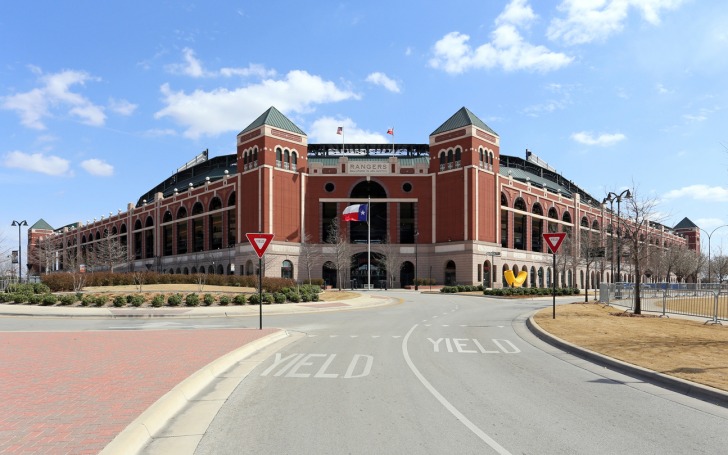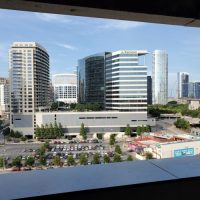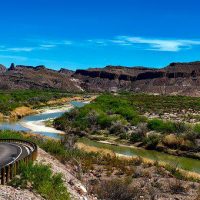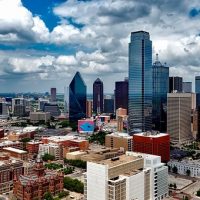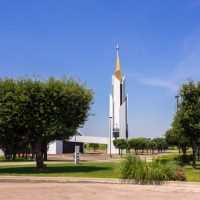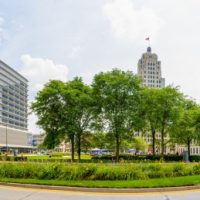Arlington, Texas is one of those places you will either love or hate, for the same reasons.
It has a lot of people in a close urban setting, there are always things going on, and it has everything a major city could offer.
Arlington is where the action is, whether that is a pro or con is up to you.
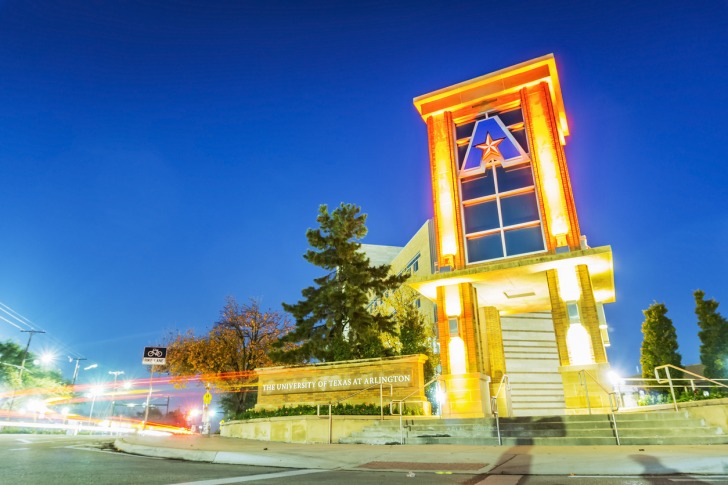
Contents
Pros of Living in Arlington, Texas
1. Great Sports Town
If you love sports, you will love Arlington.
It is home to the MLB Texas Rangers and the NFL Cowboys.
The Dallas Mavericks are not very far away.
There are several other professional sports teams — including bowling — that you could enjoy.
College athletics, as well as high school sports, are also very popular here.
2. The Weather
Arlington gets about 300 days of sunshine each year
It may or may not get an inch of snow in the wintertime.
Most of the year is good for outdoor activities.
Even during the winter, there are lots of days when you don’t need a jacket.
Fall is perhaps the best time because there is very little rain to go along with comfortable temperatures.
3. The Great Outdoors
Arlington is a big city in its own right with about 300,000 people, but there are lots of opportunities to enjoy the outdoors.
There are several lakes, state parks, and nice nature areas within easy reach of the city.
There are also several parks inside the city limits.
Hiking, hunting, fishing, boating, and camping are all popular here and within easy reach.
There are ways to do these things for free.
4. Friendly People
Southern hospitality lives in Texas just as it does in the rest of the South.
Arlington people move at a slower, more relaxed pace than people in many larger cities.
They will say hello on the street and will help you out with things like directions or the best places to eat.
People are as tolerant here as they are anywhere.
People are also welcoming to newcomers.
5. Strong Economy
Unemployment is below the national average.
Being between Dallas and Fort Worth helps.
The job market is increasing by two or three percent each year, which is a sign of a strong economy.
Job growth is expected to increase by 38 percent over the next 10 years, compared to the national prediction of 33 percent.
The city has grown slowly but steadily, and new businesses frequently relocate to Arlington.
6. Housing
Arlington has a lot of residential communities and a lot of houses.
The median home value in Arlington is $170,000, compared to the national median value of $217,000.
Home values have increased greatly over the last 10 years as well, making it a good investment.
Rent is close to the national average, and there is a wide range of rental units available.
The cost of living overall is close to the national average, but housing is significantly lower.
7. Education
The University of Texas at Arlington is a major state university with 30,000 students.
There are four more universities in Arlington, and many more within easy reach.
Local schools for kids can get a good education in the public schools and private schools are also available.
Community colleges are also strategically placed in the city.
Adults can also continue their education easily in Arlington.
8. No Income Tax
Depending on your income, this may or may not be a big deal, but there is no income tax in Texas for individuals or businesses.
Only nine states have no state income tax.
This saves people some money, but property and sales tax may take away that savings.
Another benefit is that it attracts businesses to the area, which keeps the economy strong.
Cons of Living in Arlington, Texas
1. Traffic
The bad side of living in a major metropolitan area, especially when two professional sports teams are in your backyard, and a major amusement park is on the side.
The Interstate between Dallas and Fort Worth makes it a little congested all the time, but weekends can be very hard to negotiate.
There are almost eight million people in the metro area, and it seems each of them has a car or two on the road at the same time.
2. Crime Rate
It is a little surprising since Arlington has so many upscale neighborhoods, but there is a lot of crime in this city.
There are 5.81 violent crimes per 1,000 people, compared to the national average of 4.0, and the state average of 4.5.
Rape and assault are nearly twice the national average.
Property crime is also high, with 26 per 1,000, compared to the national average of 19 per 1,000.
The state average is 21.9.
3. Summer Heat
Having sunshine most of the year is great, except in summer when it gets very hot and humid.
Arlington has had about 50 days when temperatures got above 100 for the last two years.
The last two years have been a sharp increase, but there were a lot of them in the 60s and 70s too.
There were 71 in 2011.
From late May into September, you can count on 90-plus degrees every day, and it does not cool down much at night.
It can be very tough if you don’t have air conditioning.
4. Little Public Transportation
Most people drive their own cars, and there is very little public transportation available.
Arlington was built with the automobile in mind, so it is not a great city for walking or bicycling either.
They are making progress with bike paths, however.
Living in a large city like this, you will probably have to commute to work, and you will have to find a way to get there.
A lot of people carpool, and that can help.
5. Urban Sprawl
Arlington is growing steadily.
It does not have the issue of rapid growth to contend with.
Even so, there is continuous development in and around the city.
Green spaces are disappearing as new shopping centers are being built.
Often, older buildings are abandoned when new ones are built.
Urban sprawl can have a negative impact on water quality and the environment in general.
Pollutants are more easily pushed into waterways when there is a lot of pavement and water has no place to sink into the ground.
6. Too Close to Dallas
Arlington tries as hard as it can to be its own city, but it will always live in the shadow of Dallas and Fort Worth.
This is especially true with the food and entertainment.
Now there is good food in Arlington, but the top dogs all go to Dallas to eat.
The latest and greatest things for foodies are in Dallas, and not in Arlington.
The same is true with nightlife and entertainment to a large degree.
Nationally famous bands and such think of Dallas before they think of Arlington.
7. Low Income
The cost of living is close to the national average, but average wages are below the national average.
Jobs are plentiful, but they do not pay as well as jobs pay in other places.
If you have highly specialized skills a big company needs, you can make a very good income here.
If you are not as specialized, it is harder to find a good-paying job.
This can be seen in the 14 percent poverty rate.
The national average is 13 percent.
Many people below the poverty line are working full-time jobs.
8. Violent Storms
The saying, when it rains it pours, certainly applies to Arlington.
There are more sunny days than not, but there can be damaging storms at times.
Tornadoes have hit the area a few times.
Hurricanes can also affect the area even though they weaken as they go inland.
Hurricanes can cause a lot of rain to fall fast and can cause tornadoes to develop as well.
Snow and ice are rare, but when they do happen, it causes some panic because no one is prepared.
The weather is good most of the time, but when it is not, it can be awful.
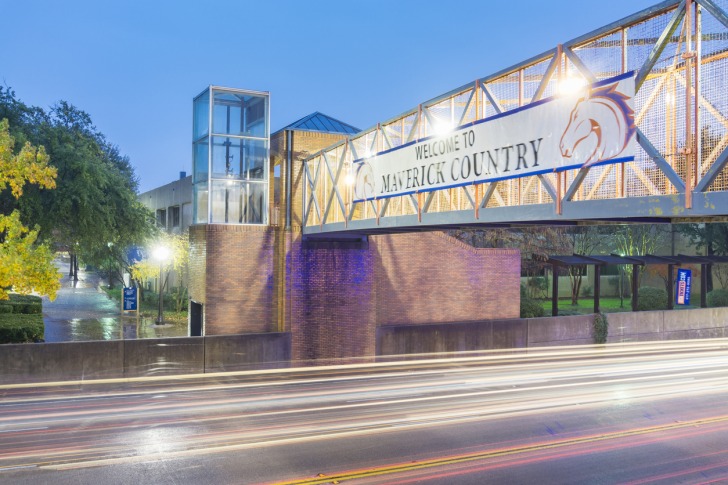
Pros and Cons of Living in Arlington, TX – Summary Table
| Pros of Living in Arlington, Texas | Cons of Living in Arlington, Texas |
|---|---|
| 1. Great Sports Town | 1. Traffic |
| 2. The Weather | 2. Crime Rate |
| 3. The Great Outdoors | 3. Summer Heat |
| 4. Friendly People | 4. Little Public Transportation |
| 5. Strong Economy | 5. Urban Sprawl |
| 6. Housing | 6. Too Close to Dallas |
| 7. Education | 7. Low Income |
| 8. No Income Tax | 8. Violent Storms |
Frequently Asked Questions
What caused Arlington's phenomenal growth in the 60s and 70s?
In 1950, Arlington had almost 8,000 people.
By 1960 it had 44,000, and by 1970 it reached 90,000, and 160,000 by 1980.
The advent of the automobile and the trend of moving out of the city into the suburbs was responsible for the boom in the population.
A new General Motors assembly plant and the aerospace industry were also major contributors.
How did Arlington get started?
Arlington was created as a railroad stop between Dallas and Fort Worth in 1876 by the Texas and Pacific Railroad.
It was named after Arlington, Virginia.
It was incorporated as a city in 1884.
Native Americans had been in the area for thousands of years.
The first white settlers arrived in 1840.
How big is the Texas-Fort Worth metropolitan area?
There are about 8 million people in the Dallas-Fort Worth area, making it the fourth-largest metro area in the nation.
Dallas is the third-largest city in the state with 1.3 million, Fort Worth is fifth at 956,000, and Arlington is seventh with 394,000.
What professional sports teams call Arlington home?
The Dallas Cowboys and Texas Rangers are the two best-known professional sports in the city.
The city has a WNBA team, the men’s XFL, Soccer, and many more.
What is the significance of the mineral well in Arlington?
There was a mineral well in the middle of downtown that was created in 1892.
It became a major meeting place until 1951.
During those years, it was the main reason to visit Arlington.
The well was capped and paved over in 1951.
